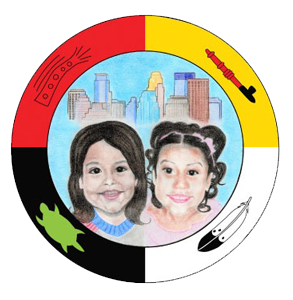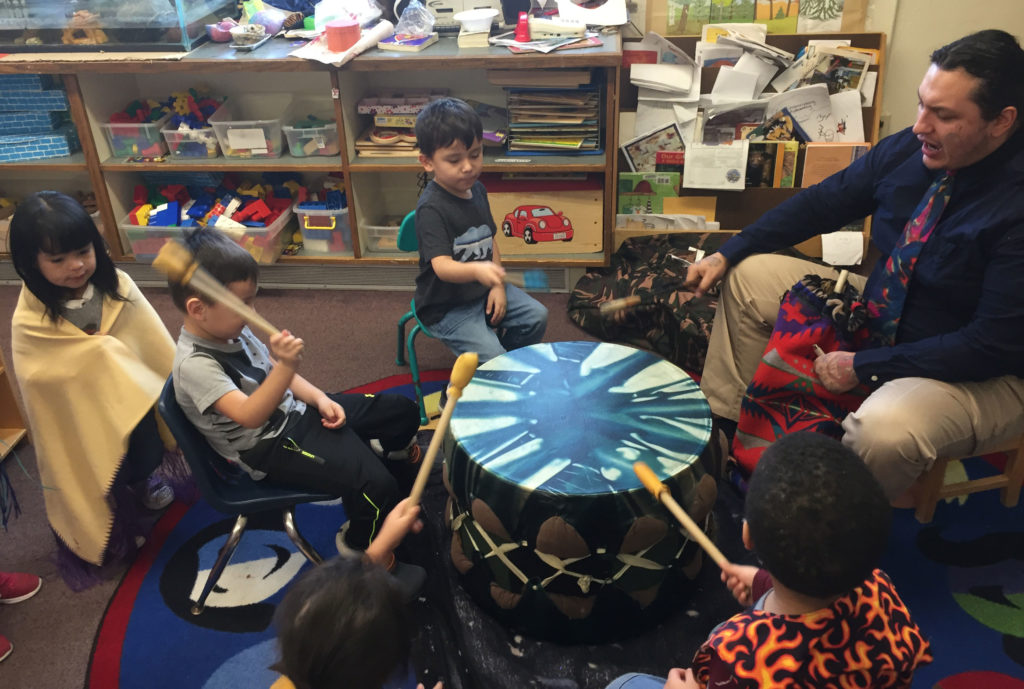In order to save the Dakota and Ojibwe languages and increase academic achievement of Native American Children, AECP, coordinates a large collaboration of programs to create three preschool language nests for 52 children. Wicoie Nandagikendan Program employs traditional Ojibwe and Dakota Native American speakers to teach Native languages to Native children at three early childhood sites in the Phillips Neighborhood.
Who was involved in co-creating or implementing your collaboration (other organizations, leaders, community members, etc.)?
Initiated by AECP’s American Indian Child Care Leaders Circle, Wicoie is now a well oiled collaboration that includes Anishinabe Academy, High Five, & Indian Education from Minneapolis Public school, AECP, Four Directions Family Center, U of M Dept. of American Indian Studies, William Mitchell Law School Intellectual Property Law Clinic, Migizi Communications, Am. Indian Center’s Golden Eagle
To what extent does your collaboration involve partnerships that are outside or cross traditional organizational or sector boundaries?
A collaboration led by an early childhood non profit, with a public school, an intellectual property law clinic, a college that has been criticized for its affirmative action, and American Indian organizations is not a traditional alignment for a collaboration.
What makes your locally-based collaboration innovative and unique?
The Wicoie Nandagikendan Pre-School Urban Immersion Program has a number of strong, synergistic relationships that together provide for a robust program with broad community involvement and support It is unique because of the amount of collaboration, level of resources each collaborators bring to the project, passion, level of accountability, and the impact it is having on the school readiness of American Indian children and the large reduction in the educational gap of American Indian children. Dakota and Ojibwe immersion is not considered a typical school readiness strategy.
Did you take risks in establishing this collaboration? Explain
When the Alliance of Early Childhood professionals initiated this project, the executive director was called to a meeting of elders and questioned why we were doing this and what were our intentions. We had to agree that a group of elders (not just of Board of Directors) would watch over our work and ensure we were accountable and that our intentions were true and sensitive to Am. Indian culture.
How did this collaboration differ from the normal way of doing your work?
This collaboration has taken almost the total energy of our organization. We have had to step back from much of the work we did in the past. When AECP met with Elders, it was agreed that this project would be spun off when it was ready and would be Native Controlled and that meanwhile, more than 50% of the Board would be from the Native community. This process will begin early in 2011.

